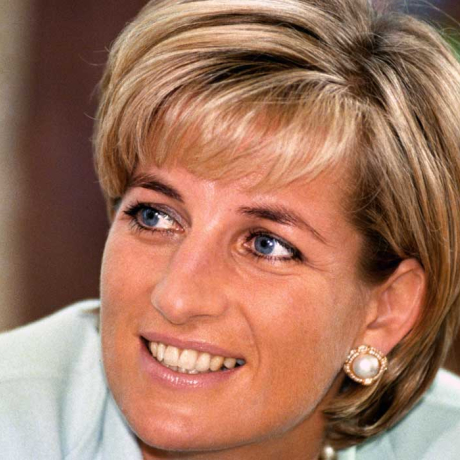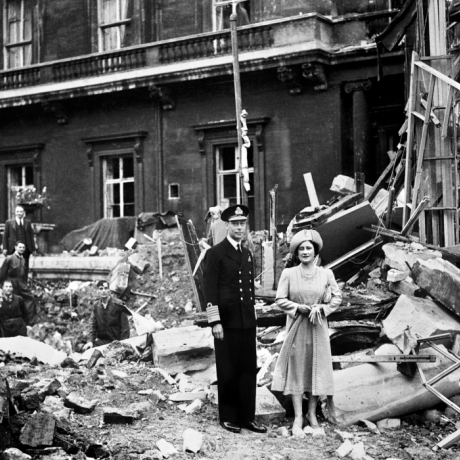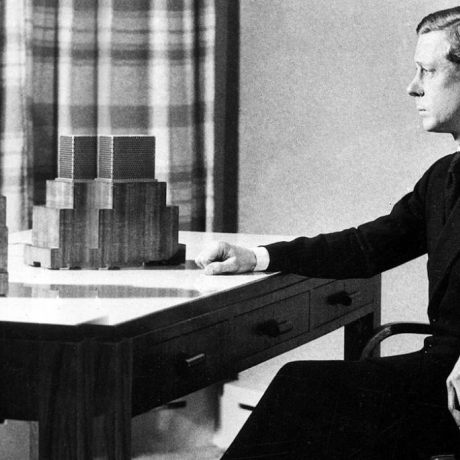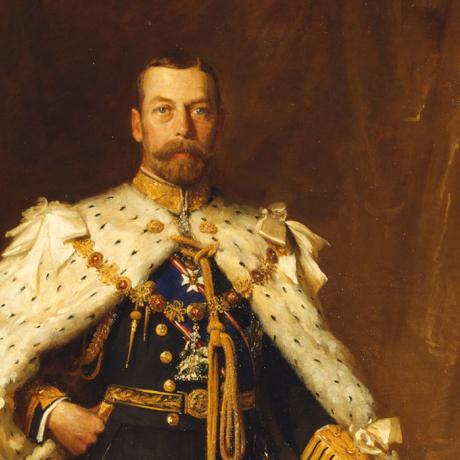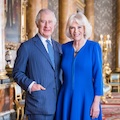The late Diana, Princess of Wales was born The Honourable Diana Frances Spencer on 1 July 1961 in Norfolk. She received the style Lady Diana Spencer in 1975, when her father inherited his Earldom.
Lady Diana Spencer married The Prince of Wales at St Paul's Cathedral in London on 29 July 1981.
During her marriage the Princess undertook a wide range of royal duties. Family was very important to the Princess, who had two sons: Prince William and Prince Henry (Harry). After her divorce from The Prince of Wales, the Princess continued to be regarded as a member of the Royal Family.
Diana, Princess of Wales, died on Sunday, 31 August 1997, following a car crash in Paris.
There was widespread public mourning at the death of this popular figure, culminating with her funeral at Westminster Abbey on Saturday, 6 September 1997.
Even after her death, the Princess's work lives on in the form of commemorative charities and projects set up to help those in need.
Childhood and teenage years
Diana, Princess of Wales, formerly Lady Diana Frances Spencer, was born on 1 July 1961 at Park House near Sandringham, Norfolk. She was the youngest daughter of the then Viscount and Viscountess Althorp, now the late (8th) Earl Spencer and the late Hon. Mrs Shand-Kydd, daughter of the 4th Baron Fermoy. Until her father inherited the Earldom, she was styled The Honourable Diana Spencer.
Viscount Althorp was Equerry to George VI from 1950 to 1952, and to The Queen from 1952 to 1954. Lady Diana's parents, who had married in 1954, separated in 1967 and the marriage was dissolved in 1969. Earl Spencer later married Raine, Countess of Dartmouth in 1976.
Together with her two elder sisters Sarah (born 1955), Jane (born 1957) and her brother Charles (born 1964), Diana continued to live with her father at Park House, Sandringham, until the death of her grandfather, the 7th Earl Spencer. In 1975, the family moved to the Spencer seat at Althorp (a stately house dating from 1508) in Northamptonshire, in the English Midlands.
Lady Diana was educated first at a preparatory school, Riddlesworth Hall at Diss, Norfolk, and then in 1974 went as a boarder to West Heath, near Sevenoaks, Kent. At school she showed a particular talent for music (as an accomplished pianist), dancing and domestic science, and gained the school's award for the girl giving maximum help to the school and her schoolfellows.
She left West Heath in 1977 and went to finishing school at the Institut Alpin Videmanette in Rougemont, Switzerland, which she left after the Easter term of 1978. The following year she moved to a flat in Coleherne Court, London. For a while she looked after the child of an American couple, and she worked as a kindergarten teacher at the Young England School in Pimlico.
Marriage and family
On 24 February 1981 it was officially announced that Lady Diana was to marry The Prince of Wales. As neighbours at Sandringham until 1975, their families had known each other for many years, and Lady Diana and The Prince had met again when he was invited to a weekend at Althorp in November 1977.
They were married at St Paul's Cathedral in London on 29 July 1981, in a ceremony which drew a global television and radio audience estimated at around 1,000 million people, and hundreds of thousands of people lining the route from Buckingham Palace to the Cathedral. The wedding reception was at Buckingham Palace.
The marriage was solemnised by the Archbishop of Canterbury Dr Runcie, together with the Dean of St Paul's; clergy from other denominations read prayers. Music included the hymns 'Christ is made the sure foundation', 'I vow to thee my country', the anthem 'I was glad' (by Sir Hubert Parry), a specially composed anthem 'Let the people praise thee' by Professor Mathias, and Handel's 'Let the bright seraphim' performed by Dame Kiri te Kanawa. The lesson was read by the Speaker of the House of Commons, Mr George Thomas (the late Lord Tonypandy).
The Princess was the first Englishwoman to marry an heir to the throne for 300 years (when Anne Hyde married the future James II from whom The Princess was descended). The bride wore a silk taffeta dress with a 25-foot train designed by the Emanuels, her veil was held in place by the Spencer family diamond tiara, and she carried a bouquet of gardenias, lilies-of-the-valley, white freesia, golden roses, white orchids and stephanotis. She was attended by five bridesmaids, including Princess Margaret's daughter Lady Sarah Armstrong-Jones (now Lady Sarah Chatto). Prince Andrew (now The Duke of York) and Prince Edward (now The Earl of Wessex) were The Prince of Wales's Supporters (a Royal custom instead of a Best Man).
The Prince and Princess of Wales spent part of their honeymoon at the Mountbatten family home at Broadlands, Hampshire, before flying to Gibraltar to join the Royal Yacht HMY BRITANNIA for a 12-day cruise through the Mediterranean to Egypt. They finished their honeymoon with a stay at Balmoral.
The Prince and Princess made their principal home at Highgrove House near Tetbury, Gloucestershire, with an apartment in Kensington Palace as their London home.
They had two sons. Prince William Arthur Philip Louis was born on 21 June 1982 and Prince Henry (Harry) Charles Albert David on 15 September 1984, both at St Mary's Hospital, Paddington, in London. The Princess had 17 godchildren.
In December 1992 it was announced that The Prince and Princess of Wales had agreed to separate. The Princess based her household and her office at Kensington Palace, while The Prince was based at St James's Palace and continued to live at Highgrove.
In November 1995 The Princess gave a television interview during which she spoke of her unhappiness in her personal life and the pressures of her public role. The Prince and Princess were divorced on 28 August 1996.
The Prince and Princess continued to share equal responsibility for the upbringing of their children. The Princess continued to be regarded as a member of the Royal Family.
The Queen, The Prince and The Princess of Wales agreed that the Princess was to be known after the divorce as Diana, Princess of Wales, without the style of 'Her Royal Highness' (as The Princess was given the style 'HRH' on marriage she would therefore be expected to give it up on divorce). The Princess continued to live at Kensington Palace, with her office based there.
Public role
After her marriage, The Princess of Wales quickly became involved in the official duties of the Royal Family.
Her first tour with The Prince of Wales was a three-day visit to Wales in October 1981. In 1983 she accompanied the Prince on a tour of Australia and New Zealand, and they took the infant Prince William with them. Prince William, with Prince Harry, again joined The Prince and Princess of Wales at the end of their tour to Italy in 1985.
Other official overseas visits undertaken with the Prince included Australia (for the bicentenary celebrations in 1988), Brazil, India, Canada, Nigeria, Cameroon, Indonesia, Spain, Italy, France, Portugal and Japan (for the enthronement of Emperor Akihito). Their last joint overseas visit was to South Korea in 1992.
The Princess's first official visit overseas on her own was in September 1982, when she represented The Queen at the State funeral of Princess Grace of Monaco. The Princess's first solo overseas tour was in February 1984, when she travelled to Norway to attend a performance of Carmen by the London City Ballet, of which she was Patron. The Princess subsequently visited many countries including Germany, the United States, Pakistan, Switzerland, Hungary, Egypt, Belgium, France, South Africa, Zimbabwe and Nepal.
Although the Princess was renowned for her style and was closely associated with the fashion world, patronising and raising the profile of younger British designers, she was best known for her charitable work.
During her marriage, the Princess was president or patron of over 100 charities. The Princess did much to publicise work on behalf of homeless and also disabled people, children and people with HIV/Aids.
In December 1993, the Princess announced that she would be reducing the extent of her public life in order to combine 'a meaningful public role with a more private life'.
After her separation from The Prince of Wales, the Princess continued to appear with the Royal Family on major national occasions, such as the commemorations of the 50th anniversary of VE (Victory in Europe) and VJ (Victory over Japan) Days in 1995.
Following her divorce, the Princess resigned most of her charity and other patronages, and relinquished all her Service appointments with military units. The Princess remained as patron of Centrepoint (homeless charity), English National Ballet, Leprosy Mission and National Aids Trust, and as President of the Hospital for Sick Children, Great Ormond Street and of the Royal Marsden Hospital.
In June 1997, the Princess attended receptions in London and New York as previews of the sale of a number of dresses and suits worn by her on official engagements, with the proceeds going to charity.
The Princess spent her 36th and last birthday on 1 July 1997 attending the Tate Gallery's 100th anniversary celebrations. Her last official engagement in Britain was on 21 July, when she visited Northwick Park Hospital, London (children's accident and emergency unit).
In the year before her death, the Princess was an active campaigner for a ban on the manufacture and use of land mines. In January 1997, she visited Angola as part of her campaign. in June, the Princess spoke at the landmines conference at the Royal Geographical Society in London, and this was followed by a visit to Washington DC in the United States on 17/18 June to promote the American Red Cross landmines campaign (separately, she also met Mother Teresa in the Bronx, New York). The Princess's last public engagements were during her visit to Bosnia from 7 to 10 August, when she visited landmine projects in Travnic, Sarajevo and Zenezica.
It was in recognition of her charity work that representatives of the charities with which she worked during her life were invited to walk behind her coffin with her family from St James's Palace to Westminster Abbey on the day of her funeral.
Charities and patronages
After her marriage, The Princess of Wales quickly became involved in the official duties of the Royal Family.
Her first tour with The Prince of Wales was a three-day visit to Wales in October 1981. In 1983 she accompanied the Prince on a tour of Australia and New Zealand, and they took the infant Prince William with them. Prince William, with Prince Harry, again joined The Prince and Princess of Wales at the end of their tour to Italy in 1985.
Other official overseas visits undertaken with the Prince included Australia (for the bicentenary celebrations in 1988), Brazil, India, Canada, Nigeria, Cameroon, Indonesia, Spain, Italy, France, Portugal and Japan (for the enthronement of Emperor Akihito). Their last joint overseas visit was to South Korea in 1992.
The Princess's first official visit overseas on her own was in September 1982, when she represented The Queen at the State funeral of Princess Grace of Monaco. The Princess's first solo overseas tour was in February 1984, when she travelled to Norway to attend a performance of Carmen by the London City Ballet, of which she was Patron. The Princess subsequently visited many countries including Germany, the United States, Pakistan, Switzerland, Hungary, Egypt, Belgium, France, South Africa, Zimbabwe and Nepal.
Although the Princess was renowned for her style and was closely associated with the fashion world, patronising and raising the profile of younger British designers, she was best known for her charitable work.
During her marriage, the Princess was president or patron of over 100 charities. The Princess did much to publicise work on behalf of homeless and also disabled people, children and people with HIV/Aids.
In December 1993, the Princess announced that she would be reducing the extent of her public life in order to combine 'a meaningful public role with a more private life'.
After her separation from The Prince of Wales, the Princess continued to appear with the Royal Family on major national occasions, such as the commemorations of the 50th anniversary of VE (Victory in Europe) and VJ (Victory over Japan) Days in 1995.
Following her divorce, the Princess resigned most of her charity and other patronages, and relinquished all her Service appointments with military units. The Princess remained as patron of Centrepoint (homeless charity), English National Ballet, Leprosy Mission and National Aids Trust, and as President of the Hospital for Sick Children, Great Ormond Street and of the Royal Marsden Hospital.
In June 1997, the Princess attended receptions in London and New York as previews of the sale of a number of dresses and suits worn by her on official engagements, with the proceeds going to charity.
The Princess spent her 36th and last birthday on 1 July 1997 attending the Tate Gallery's 100th anniversary celebrations. Her last official engagement in Britain was on 21 July, when she visited Northwick Park Hospital, London (children's accident and emergency unit).
In the year before her death, the Princess was an active campaigner for a ban on the manufacture and use of land mines. In January 1997, she visited Angola as part of her campaign. in June, the Princess spoke at the landmines conference at the Royal Geographical Society in London, and this was followed by a visit to Washington DC in the United States on 17/18 June to promote the American Red Cross landmines campaign (separately, she also met Mother Teresa in the Bronx, New York). The Princess's last public engagements were during her visit to Bosnia from 7 to 10 August, when she visited landmine projects in Travnic, Sarajevo and Zenezica.
It was in recognition of her charity work that representatives of the charities with which she worked during her life were invited to walk behind her coffin with her family from St James's Palace to Westminster Abbey on the day of her funeral.
Death
The tragic death of Diana, Princess of Wales occurred on Sunday 31 August 1997 following a car accident in Paris, France.
The vehicle in which The Princess was travelling was involved in a high-speed accident in the Place de l'Alma underpass in central Paris shortly before midnight on Saturday 30 August.
The Princess was taken to the La Pitie Salpetriere Hospital, where she underwent two hours of emergency surgery before being declared dead at 0300 BST. The Princess's companion, Mr Dodi Fayed, and the driver of the vehicle died in the accident, whilst a bodyguard was seriously injured.
The Princess's body was subsequently repatriated to the United Kingdom in the evening of Sunday 31 August by a BAe 146 aircraft of the Royal Squadron. The Prince of Wales and the Princess's elder sisters, Lady Sarah McCorquodale and Lady Jane Fellowes, accompanied The Princess's coffin on its return journey.
Upon arrival at RAF Northolt, the coffin, draped with a Royal Standard, was removed from the aircraft and transferred to a waiting hearse by a bearer party from The Queen's Colour Squadron of the RAF. The Prime Minister was among those in the reception party.
From RAF Northolt the coffin was taken to a private mortuary in London, so that the necessary legal formalities could be completed. Shortly after midnight, it was moved to the Chapel Royal in St James's Palace, where it lay privately until Friday 5 September, when it was taken to Kensington Palace for the last night before the funeral on Saturday 6 September, in Westminster Abbey. The Princess's family and friends visited the Chapel to pay their respects.
Following the funeral service, the coffin then was taken by road to the family estate at Althorp for a private internment. The Princess was buried in sanctified ground on an island in the centre of an ornamental lake.
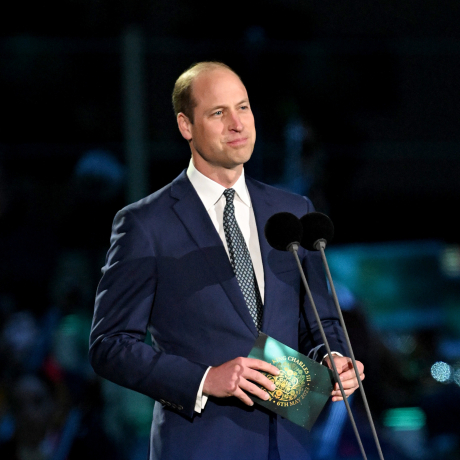
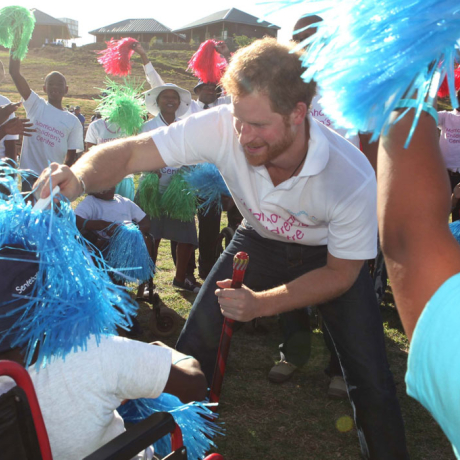
Combatting the illegal wildlife trade


